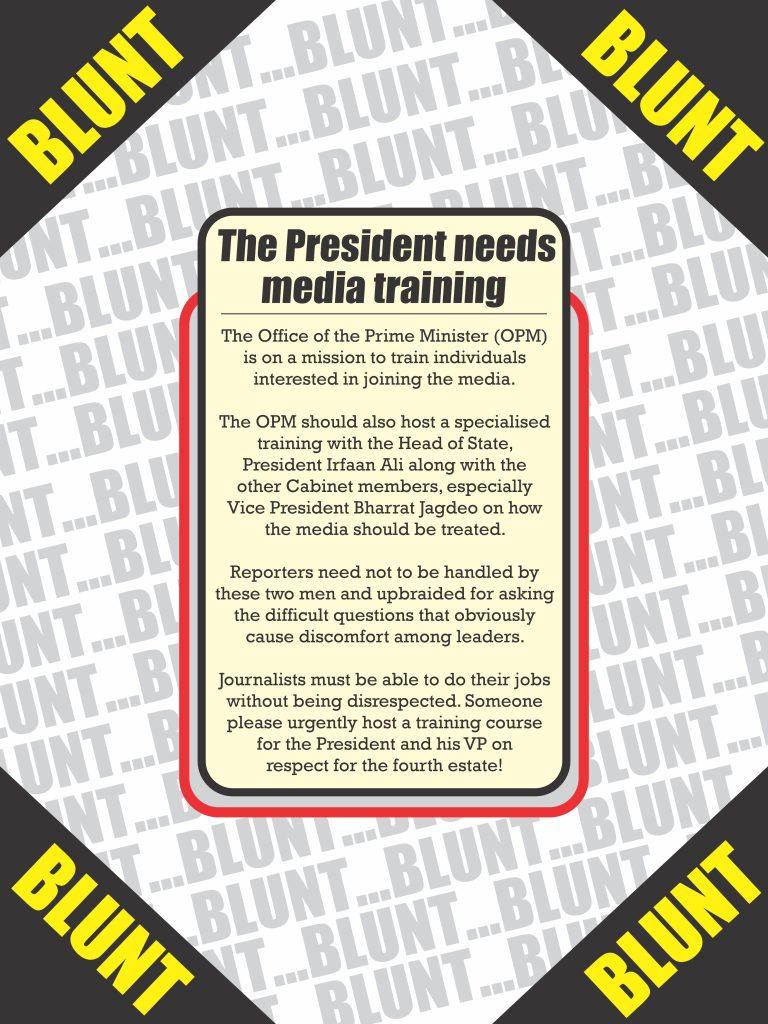Latest update April 18th, 2024 12:59 AM
Latest News
- Exxon’s 6th oil project will eat away at skilled labour from local businesses – Impact Assessment Report reveals
- Stabroek Market wharf collapses, several injured
- Israel-Gaza truce talks have hit ‘stumbling block’, says Qatar
- Body of missing fisherman floats up at Belladrum Beach
- Guyanese men gunned down in Suriname
PAHO urges responsible reporting on suicide
Mar 30, 2017 News
 Suicide is a tragic but highly prevalent public mental health problem. As such, covering the issue poses special challenges for journalists and news organisations. The media and online coverage of suicide should be informed by using best practices.
Suicide is a tragic but highly prevalent public mental health problem. As such, covering the issue poses special challenges for journalists and news organisations. The media and online coverage of suicide should be informed by using best practices.
While some suicide deaths may be newsworthy, the way media cover suicide can influence behaviour, negatively, by contributing to recurrences, or positively by encouraging those at risk to seek help. These projections were explored during a Pan American Health Organization, (PAHO) Webinar.
According to the information outlined by the PAHO website, journalists from Latin America and the Caribbean participated in a webinar examining challenges and best practices in reporting on suicide held yesterday.
The webinar was facilitated by instructors: Dr. Dévora Kestel, Chief of PAHO’s Mental Health and Substance Abuse unit, and Dr. Dan Reidenberg, executive director of Suicide Awareness Voices of Education (SAVE).
During the online workshop, best practices for reporting on suicide was discussed, in addition to strategies and terminology that can be used to report suicides in an informative, accurate and responsible way to better serve readers and their communities.
According to the information emanating from the meeting, more than 50 research studies worldwide have found that certain types of news coverage can increase the likelihood of suicide in vulnerable individuals.
The magnitude of the increase is related to the amount, duration, and prominence of coverage.
The risk of additional suicides increases when the story explicitly describes the suicide method, uses dramatic/graphic headlines or images, and repeated/extensive coverage sensationalises or glamorises a death.
“Suicide Contagion, or “Copycat Suicide,” occurs when one or more suicides are reported in a way that contributes to another suicide.”
Covering suicide carefully, even briefly, can change public misperceptions and correct myths, which can encourage those who are vulnerable or at risk to seek help.
Facilitators of the webinar, therefore, warned reporters to avoid language which sensationalises, normalises suicide, or presents it as a solution to problems.
“Avoid prominent placement and undue repetition of stories about suicide; avoid the explicit description of the method used in a completed or attempted suicide and avoid providing detailed information about the site of a completed or attempted suicide.
Journalists should utilise words in headlines carefully; exercise caution in using photographs or video footage and take particular care in reporting celebrity suicides
Additionally, persons reporting on the topic should show due consideration for people bereaved by suicide, provide information about where to seek help and recognise that media professionals themselves may be affected by stories about suicide.
Share this:
- Click to print (Opens in new window)
- Click to email a link to a friend (Opens in new window)
- Click to share on Facebook (Opens in new window)
- Click to share on WhatsApp (Opens in new window)
- Click to share on Twitter (Opens in new window)
- Click to share on Pinterest (Opens in new window)
- Click to share on Pocket (Opens in new window)
- Click to share on Tumblr (Opens in new window)
- Click to share on Reddit (Opens in new window)
- Click to share on LinkedIn (Opens in new window)
Related
Similar Articles

The Glenn Lall Show | April. 15th, 2024
Follow on Tik Tok @Glennlall
JAGDEO ADDING MORE DANGER TO GUYANA AND THE REGION
THE BLUNT OF THE DAY

Sports
Apr 18, 2024
SportsMax – West Indies captain Hayley Matthews has been named Wisden’s leading Twenty20 Cricketer for 2023, as she topped all and sundry, including her male counterparts. Alan Gardner looks...Features/Columnists
Should our students still be studying Shakespeare?
Kaieteur News – Compliments of the Ministry of Education, our secondary school children are being treated to a stage... more
Embassy Raid Sparks Outcry: Urgent Healing Action Needed
By Sir Ronald Sanders Waterfalls Magazine – On April 10, the Permanent Council of the Organization of American States... more
Publisher’s Note
Freedom of speech is our core value at Kaieteur News. If the letter/e-mail you sent was not published, and you believe that its contents were not libellous, let us know, please contact us by phone or email.
Feel free to send us your comments and/or criticisms.
Contact: 624-6456; 225-8452; 225-8458; 225-8463; 225-8465; 225-8473 or 225-8491.
Or by Email: [email protected] / [email protected]
Weekend Cartoon















